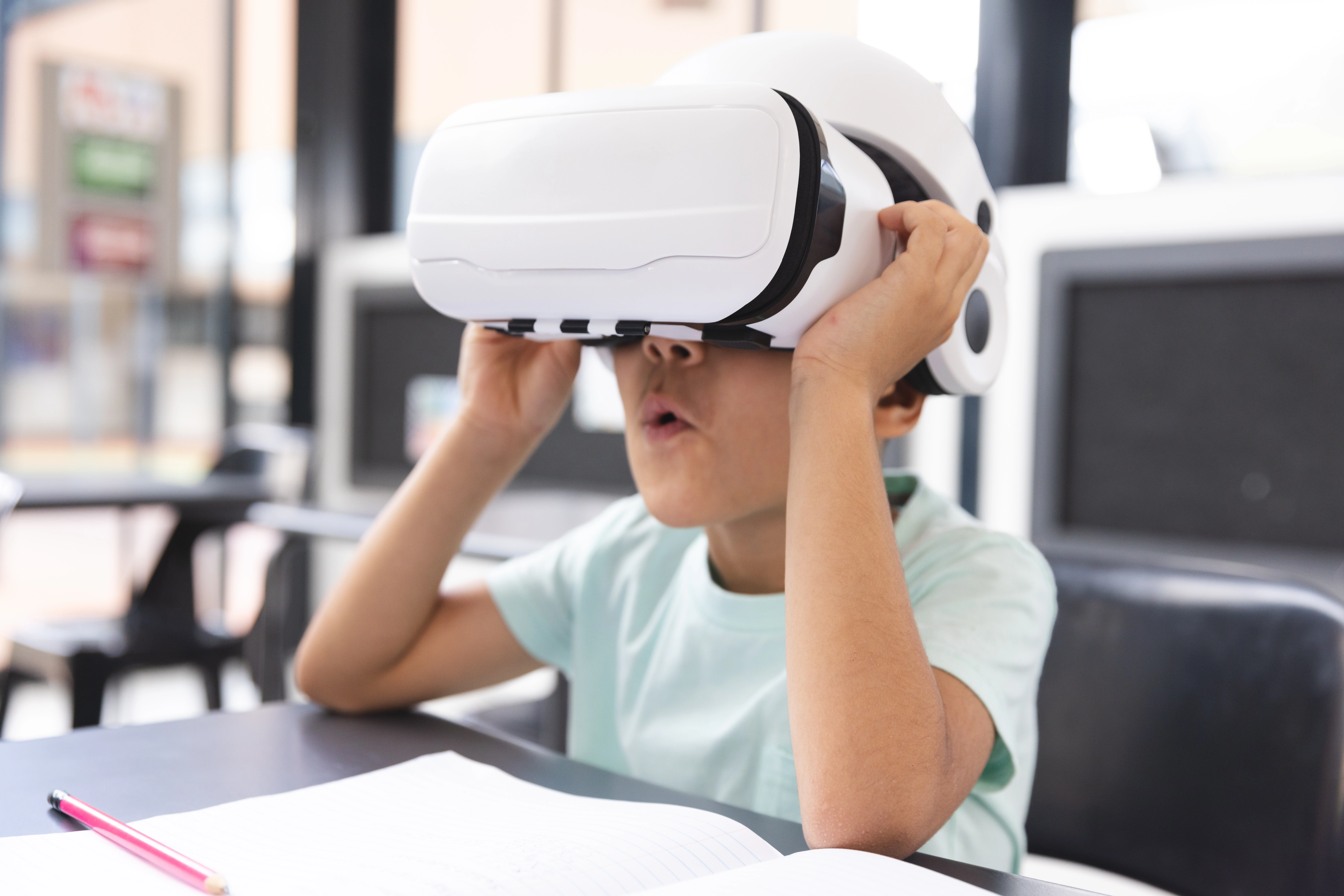The traditional method of education has been the same for over decades in the sense that it involves the educator facing the students and delivering lectures, thereby leaving it upon the knowledge retention and imaginative capability of the students to acquire an understanding of the same. But, this conventional system of learning comes with several disadvantages for students that we can point out, and some of them are:
Limited opportunity to engage in interactive learning activities.
Difficulty in retention of concepts over time, thereby affecting academic results.
Understanding technical concepts becomes difficult due to the absence of experiential learning.
A significant disconnect remains between theoretical knowledge and practical application.
How is AR/VR helping to overcome these barriers and reshaping the future of education?
Breaking Geographic and Physical Boundaries
One of the most impressive offerings of AR/VR technologies is that they boast the ability to bring the world to the classroom. If you are curious, let us dive a bit deeper into this aspect.
So, imagine a History lesson where students get the opportunity to actually "walk" through the ruins of Pompeii or a Geography class that lets them explore planets, forests or mountains to the very depths, and these are experiences that are certainly impossible in real life considering logistical limitations. That’s how AR/VR technologies impact learning by making all of this possible for the students without having to leave their desks.
Catering to Individual Learning Needs
Not all students learn the same way because traditional methods of teaching sometimes fail to address the learning preferences of students, and AR/VR technologies are bridging this particular gap by offering interesting, interactive as well as immersive learning experiences that cater to the specific needs of visual, auditory, and kinesthetic learners individually.
The use of this advanced technology helps medical students to practice surgical procedures in a virtual environment that is completely free of risks. In this way, they are able to upgrade their practical skills as well as boost their self-confidence without worry.
The Specialties of eLearning Software and Advantages of Remote Education
When the technology of AR/VR merges with eLearning software, remote education becomes more and more dynamic for certain reasons:
Virtual classrooms recreate physical spaces, thereby allowing both students and teachers to interact with each other in a more realistic way.
Immersive environments encourage collaboration, keeping students engaged in group projects or discussions.
This blend of AR/VR and remote learning has played a very important role in terms of maintaining educational continuity during the COVID-19 pandemic.
What seems to be the Future of Virtual Reality in Education?
When it comes to the future of virtual reality in education, it looks like it has high potential and is going to make promising developments in the upcoming days by personalizing and making eLearning software more adaptive and user-friendly. As technology becomes more affordable, schools across the globe will definitely adopt AR/VR tools, thereby bridging educational gaps. This innovation ensures that quality learning experiences are no longer a privilege but a necessity and standard for all.
How KiXR Can Help Revolutionize Your Institution
At KiXR, we specialize in crafting excellent AR/VR solutions for educational purposes. From interactive virtual labs to immersive training simulations, our tools are specifically designed to meet the unique needs of learners and educators alike.
Explore how KiXR’s expertise can make learning accessible, engaging, and effective for your students. Reach out today to start transforming your educational journey.
Kavita has been adept at execution across start-ups since 2004. At KiKsAR Technologies, focusing on creating real life like shopping experiences for apparel and wearable accessories using AI, AR and 3D modeling


